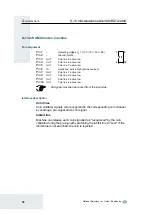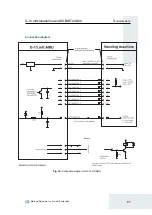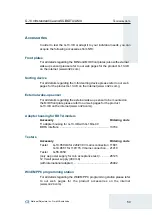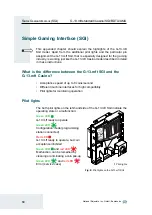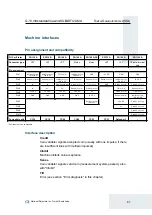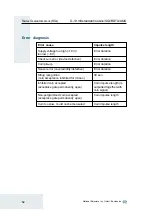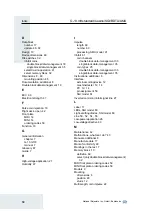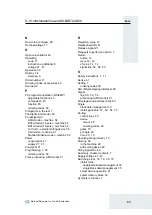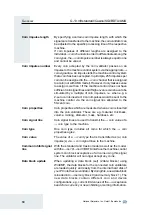
G
LOSSARY
G-13.mft standard/Casino/SGI/BDTA/AMU
70
National Rejectors, Inc. GmbH, Buxtehude
Single inhibit signal line Signal line between the machine control system and the
G-13.mft standard and Casino model as well as the model
with the G-40 BDTA interface which is used to block the
acceptance of individual
→
→
→
→
→
coin types (one coin type and
several coin types). For single inhibiting with the
→
AMU
model, see
→
inhibit signal line.
Sorting control line
To sort the cash-box coins with an external sorting device,
the coin validator has three sorting control lines. The
→
return
signal line can also be used as an alternative for sorting.
Sorting gate
The sorting gates are activated in the coin validator depending
on the run time of accepted coins and direct the coins to be
sorted into the coin return or coin outlet towards the cash-box
or external sorting device.
Sorting time
The sorting time specifies the switching times of an external
sorting device.
Switching blocks
The two switching blocks are located on the rear of the coin
validator and incorporate 10 DIL switches each. Each switch
has a specific function, e.g. inhibiting individual or grouped
→
coin channels.
Teach mode
In the teach mode, the last eight
→
coin channels can be
assigned new
→
coin types or
→
tokens on site at the
machine without any configuration tools by inserting the new
coins, which means that these newly configured coins are
accepted in the respective coin channel for payment.
Token
Tokens are accepted for payment at machines instead of
coins in a currency.
Wake-up sensor
Optional sensor positioned behind the coin insert funnel
which monitors the insertion area and wakes up the coin
validator after the first coin insertion. The coin inserted is
measured and accepted or rejected. If no further coin is
inserted during the next 3.5 seconds, the coin validator
returns to sleep mode. Coin validators with wake-up sensor
are used in battery and low- power applications, as they are
most of the time in sleep mode with a very low power
consumption (max. 15 µA).
Summary of Contents for NRI G-13.mft Standard
Page 2: ......

